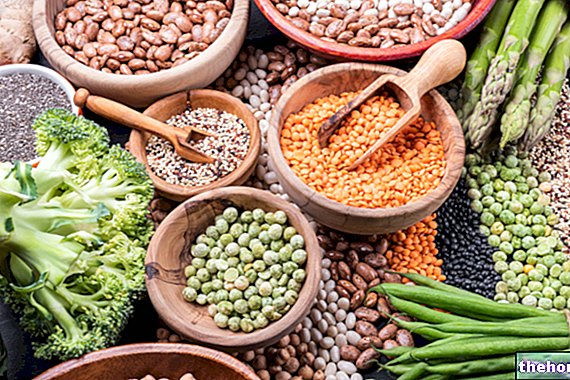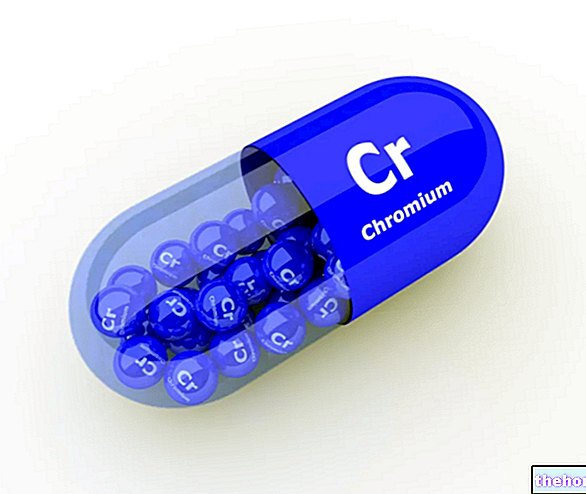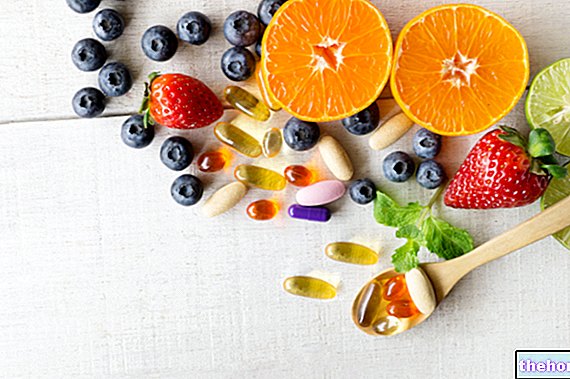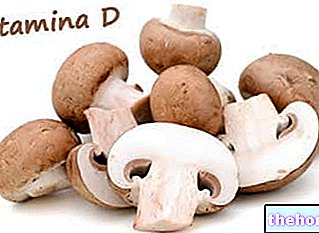Chemical Structure
Monounsaturated fatty acids are molecules formed by a long carbon chain, which begins with a carboxylic group (COOH), ends with a methyl group (CH3) and has a series of carbon atoms in the central part, each of which is coupled to two hydrogen atoms; an exception to what has been described is a single pair which - by binding only one hydrogen atom per carbon unit - is held together by a double bond (see figure). Unlike monounsaturated fatty acids, the carbon chain of polyunsaturates has at least two double bonds, while that of saturated fatty acids does not.

In each monounsaturated fatty acid there is a molecular "folding" at the double bond. For this reason the triglycerides that contain them cannot "pack" sufficiently to form a solid structure; consequently, a food rich in monounsaturated fats is liquid at room temperature, it is more fluid than those in which saturated fats prevail, but has a higher melting point than foods rich in polyunsaturated (which solidify at lower temperatures).
In nature, the most common monounsaturated fats are:
- l "palmitoleic acid (C16: 1ω7);
- l "oleic acid (C18: 1ω9);
- l "erucic acid (C22: 1ω13).
If we take palmitoleic monounsaturated acid as an example, the acronym C16: 1ω7 indicates the presence of 16 carbon atoms, with a double bond between the seventh and eighth starting from the methyl (terminal) end.
Properties and health effects
Oleic acid is undoubtedly the most important and well-known monounsaturated fatty acid, capable of conferring peculiarities interested in foods that are rich in it. The high stability - which translates into a "high resistance to heat and oxidation - improves the shelf life of these foods, it preserves them from rancidity and makes them particularly suitable for frying. Therefore the constant genetic improvement of the cultivation of oil plants aims, in many cases, to increase their content in oleic acid. A food particularly rich in this precious nourishing is olive oil, which contains it in percentages ranging from 59 to 80%. Excellent concentrations of oleic acid are also recorded in almonds, hazelnuts, peanuts, pistachios and their respective oils.
When compared to a diet rich in saturated fatty acids, a "diet rich in oleic acid promotes the maintenance of normal blood fluidity and reduces the amount of cholesterol associated with low-density lipoproteins (LDL or bad cholesterol), while it has no important effect on the level of triglycerides and on the cholesterol associated with lipoproteins high density (which eventually tends to increase). This does not mean that the more olive oil is consumed and the more health is gained (on the contrary ...), but simply that it is necessary to prefer it to animal lipids, contained in butter, in lard and lard, and the hydrogenated ones in margarines.
Unlike oleic acid, erucic acid is one of the "undesirable" monounsaturated fatty acids (at least in the food and health sector). If consumed in large quantities (the law requires that edible oils and margarines contain less than 5% of it) it has negative repercussions on growth, liver and heart. For this reason, thanks to the aforementioned genetic improvement of crops, today we have rapeseed oils (renamed "canola") with a very low erucic acid content.
Palmitoleic monounsaturated fatty acid is also no friend to human health, as it behaves exactly like an atherogenic saturated fatty acid. Compared to a diet rich in oleic acid, a diet rich in palmitoleic acid tends to increase bad LDL cholesterol and decrease good HDL cholesterol. Palmitoleic acid is found in various foods and is particularly abundant in Macadamia oil (Macadamia integrifolia) and in that of sea buckthorn (Hippophae rhamnoides).




























